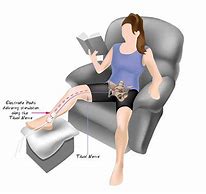HOW IS OAB TREATED?
Dietary changes
Avoiding bladder irritants through fluid and diet modifications can help decrease your symptoms. Foods and fluids to eliminate from your diet include:
- Caffeine (coffee/tea)
- Carbonation (soda/seltzer)
- Artificial sweeteners
- Spicy foods
Bladder training
Re-training your bladder involves timed peeing, initially at shorter intervals and then extending the intervals over the course of weeks. It also includes various techniques to help you meet the timed voids. As you use these techniques, your bladder muscle adjusts and you make fewer trips to the bathroom.
Pelvic floor physical therapy
Working with a physical therapist who specializes in pelvic health can help decrease your symptoms. The physical therapist will give you individual exercises to help decrease urinary urgency and leaking. Exercises can take up to three to six weeks to have effect.
Medication
There are many medication options to help you hold urine for longer periods of time and decrease your urine leakage. Potential side effects include dry mouth and constipation.
Nerve stimulation
There are various nerves involved in bladder function. Nerve stimulation can help control these nerve impulses, reducing urinary urgency.
 |
- Tibial nerve stimulation involves inserting a small needle on the inside of the ankle, connected to an external device that stimulates the nerve and reduces bladder activity. Treatment includes a series of sessions in office.
- Sacral nerve stimulation calls for a small device to be inserted on one side of the spine. The device sends nerve signals to the bladder that cause it to relax. You will undergo a trial to determine its success before the device is implanted.
|
TERMINOLOGY
- Urinary urgency: A sudden need to urinate that is difficult to ignore.
- Frequency: Urinating more than eight times in a 24-hour period.
- Nocturia: Urinating more than one or two times per night.
- Overactive bladder: Urgency, frequency and nocturia, sometimes with urinary urgency incontinence.
|
Download the Educational PDF